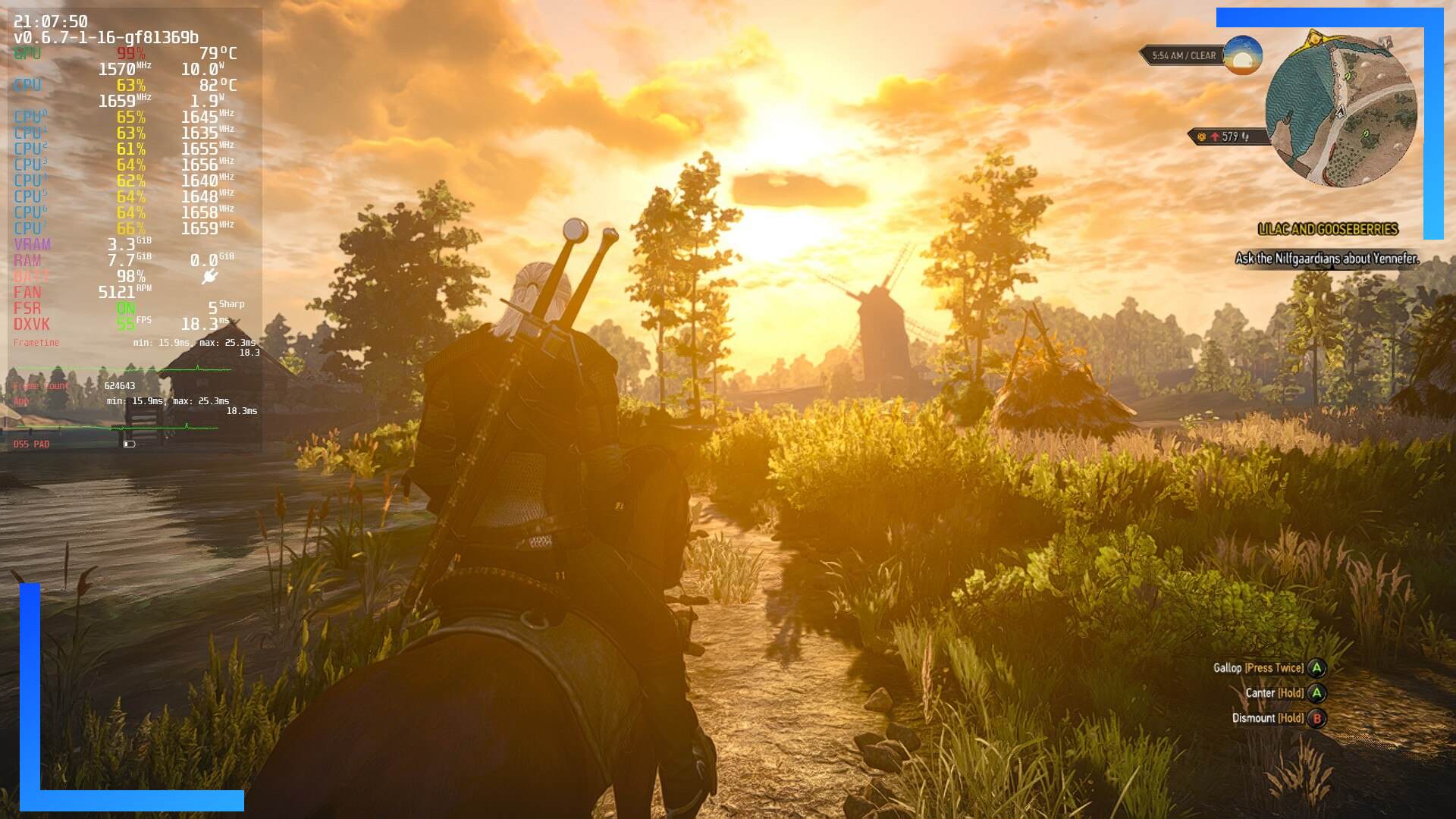Recommended Settings
On the whole, players can expect around 45 to 60 frames per second while playing with all graphics on medium. Where things do start to tank is when Geralt moves into the open-world. Indoors, the game will move at around 50 to 60 frames, but the moment Geralt steps outside, the frames start to move downwards. It’s the same for when Geralt is on horseback. Galloping through the open-world areas causes the game to output between 45 to 60 frames, with lows down into the high 30s.
All that said, visually 45 isn’t a massive drop from 60. Some may be able to notice it, but I’d wager most won’t. You could always lock the game to 45 frames in the quick access menu if it does bother you, but to be honest it’s fine as it is. The game feels fluid for the most part and the dropped frames just aren’t a major issue.
Visually, medium isn’t as blinding as high or ultra, but The Witcher 3 still looks great, even in 720p on the Steam Deck’s smaller screen.
Low Settings Performance Overview
If you care about frames, whacking all the settings down to low is the best option for smoothness. Though be warned, while the game will flutter between 50 to 60 frames, the visual downgrade isn’t recommended. The game still looks decent, but the trade-off isn’t worth it for around five extra frames. Sure it’s more fluid, but the frame increase isn’t massively noticeable.
Don’t Skip the Launcher (Yet)
Normally with CD Projekt Red games, players can set the launch condition --launcher-skip to bypass the launcher and boot directly into the game. Don’t do this. It’ll default the Witcher 3 to the DirectX 12 version, which ends in a crash. If DirectX 12 does end up working on the Deck, though, then you can implement the skip command.
Issues Overview
At the time of writing, DirectX 12 isn’t compatible with the Witcher 3 next-gen on Steam Deck. That means you’ll need to use the game’s launcher to change the DirectX version over to DirectX 11 if you want to play.
Even though the DirectX 12 version can be loaded, it crashes when trying to load a game.
The downside of this is you lose several features, including in-game FSR. The Steam Deck’s quick access menu of FSR still works, though.
There’s also an NVIDIA option in the settings to improve hair in the DirectX 11 version, but that causes Geralt to have a shaved head and kills the overall performance.
- DirectX 12 Crashes
- No FSR in DirectX 11
- Runs hot
- NVIDIA Hair settings don’t work and lower performance
- Battery life is around 80 minutes
Also, during my testing the Witcher 3 next-gen update on Steam Deck isn’t capable of a smooth 60 frames per second. It’s not all bad, though. Frames fluctuate constantly between 45 and 60 depending on your settings and where you are in-game. Is that an issue? Not really. 45 feels very close to 60.
Lastly, while it is possible to run the game on high, ultra, or ultra+, I don’t recommend it. The Steam Deck only outputs at 720p anyway and the drop in performance that comes with higher settings isn’t worth it.
How to Revert Back to Witcher 3: Wild Hunt
As the original Witcher 3 ran really well on Steam Deck prior to this update, there are a lot of people who are looking to revert back to before the next-gen update. This is, thankfully, simple to do.
From the main Gaming Mode screen, find The Witcher 3 and hit Properties. From here, on the left side of the screen hit or click on Betas. Next click on None and a drop-down menu will show you the option Classic. That’s the version you want if you want to play the original Witcher 3 version.
Click on Classic then the Steam Deck will update the game. If it doesn’t, hit Play instead and it should force the Deck to change which version you’re on.

Disclosure: Review code provided by PR. | All screenshots captured on Steam Deck.| To learn more about our review policy click here. | Alternatively, click here to find out why you can trust me.

